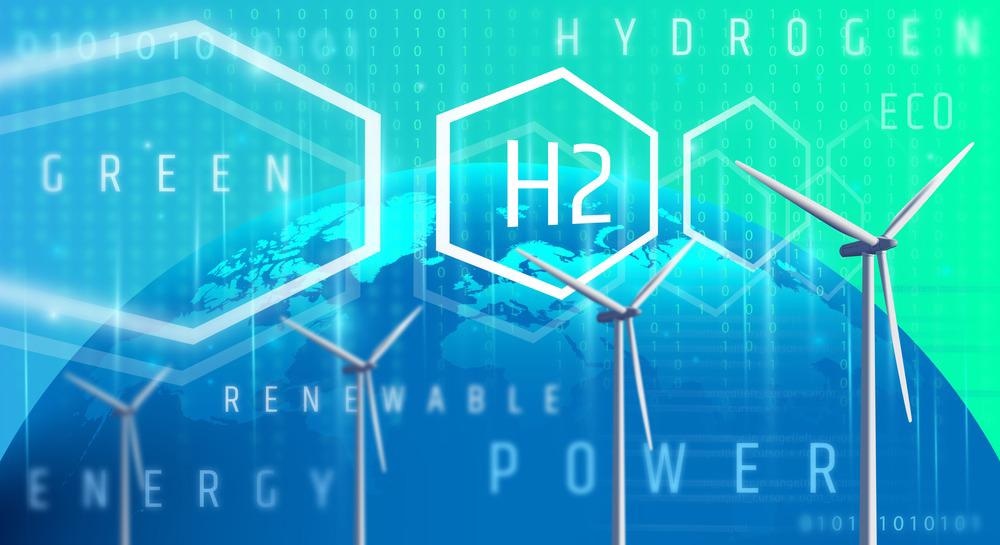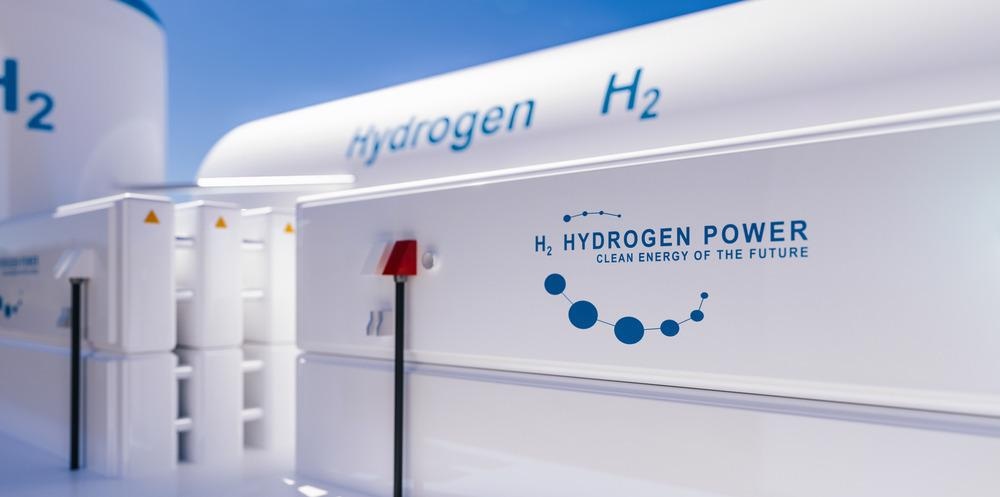If hydrogen is created using renewable resources, it has the potential to become a sustainable energy provider. This will result in hydrogen generation with a very low carbon impact.

Image Credit: Tomasz Makowski/Shutterstock.com
The energy content of hydrogen per weight is 2.5 times that of any other common fuel. Hydrogen is often regarded as the energy carrier of the future.
Hydrogen is recognized as an exciting fuel because it may be utilized as an energy transporter, a reservoir material, in fuel cell technology, as a fuel, and it provides carbon-free alternatives. The worldwide distribution of energy usage is currently predicted to be 80 percent fossil fuels, 14 percent sustainable sources, and 6 percent nuclear power.
Renewable technologies, such as sunlight, air, and hydroelectric, contribute just 3% to the global energy system. The usage of renewable power is becoming increasingly important as the amount of energy required rises in tandem with the growth of emerging countries' GDP.
Advantages of Hydrogen Power
Hydrogen is a valuable type of power for a myriad of purposes, the most important of which is its abundant availability. Hydrogen can be created on-site where it will be needed, or it can be synthesized remotely and delivered. Hydrocarbon, gasoline, biofuel, coke, or water may all be used to create hydrogen gas.
Pollution levels, technological obstacles, and energy needs vary based on the sources employed. In the case of the utilization of hydrogen as a fuel source, the remnants after the process of energy production are non-hazardous. Their composition is such that they pose no harm to human health or the surrounding environment.
This has led to the use of hydrogen in various industries such as water sources for the aviation and aerospace sector worldwide. It is a non-toxic chemical that is uncommon for use as a fuel source. This signifies that it is beneficial to the environment and does not hurt or destroy human health.
When hydrogen and oxygen mix in a battery pack, power is created, which may be utilized to propel cars or to operate an electric generator as a heating element. The chemical reaction of hydrogen with the gaseous oxgen results in the discharge of heat with the production of water. Both of these products are harmless and this is the reason hydrogen is preferred as a sustainable energy source.
Limitations of Hydrogen Power
Amidst being the most abundant mineral, hydrogen does not occur by itself and must be collected from water by electrolysis or separated from carbon-based fossil fuels. Both of these procedures need a large quantity of energy. This power can be greater than that obtained from hydrogen alone, and it is also more costly. Furthermore, in the lack of CCS, this extraction often necessitates the use of fossil energy, undermining hydrogen's ecological credentials.
Furthermore, rare precious metals like platinum and iridium are commonly used as electrocatalysts in fuel cell technology as well as some forms of water electrolyzing substance, which implies that the original price of fuel cells can be substantial. Some people have been discouraged from investing in hydrogen fuel cell technology because of the significant expense.

Image Credit: Audio und werbung/Shutterstock.com
At the moment, the price of a unit of electricity from fuel cells is higher than that of other forms of energy, including photovoltaic panels. There are additional regulatory difficulties about the structure that specifies business application scenarios. The benefits of hydrogen fuel cells as one of the finest alternative energy sources are obvious, but there are still a number of hurdles are to be removed before hydrogen can fully realize its promise as a crucial facilitator for a potential decarbonized energy infrastructure.
Traditional Hydrogen Production with Electrolysis
Hydrogen is produced with electrolyzers by electrolysis of water with a continuous electrical charge. At 25°C, a minimum voltage of 1.23 V must be placed across the anode and cathode of the electrolyzer, with the voltage decreasing as the temperature rises. The voltage of 1.23 V equates to a Gibbs free energy change (G) of +237 kJ/mole H2 for the water electrolysis process. The higher heating value (HHV) is more widely used in the electrolyzer sector to calculate the energy content of H2.
However, certain limitations exist for the production of hydrogen gas via electrolysis techniques. The major one is the low efficiency of the process. The yield of the products as compared to others is very low and requires a lot of energy. This deems the product non-effective where there is an essential need for a powerful energy source along with photocatalytic materials.
Novel Hydrogen Production Techniques
New research has focused on newer techniques for hydrogen production. These include the biomass gasification technique, solar PV technique, and geothermal hydrogen power production. The mounted solar PV panel receives solar irradiation and generates electricity.
The electricity generated by the solar PV panel is direct current (DC), and the PEM electrolyzer likewise requires DC power, thus it is sent straight to the PEM electrolyzer. The PEM electrolyzer takes the PV panels' power output, runs at 80 degrees Celsius and 1 bar of pressure, and separates water into hydrogen and oxygen.
To produce high-grade syngas, the biomass gasification reaction B3 is carried out at 850 C temperature and 24.31 bar pressure. A portion of the syngas is directed to the Brayton cycle, while the remainder is directed to the multi-stage water gas shift reactor (MWGSR), which is used in the system to transform CO into CO2 by reacting it with steam and producing hydrogen gas.
The generation bore, compressor, reinjection well, and PEM electrolyzer are the core elements of the geothermal energy generation-based hydrogen manufacturing systems. The geothermal fluid's input temperature is 240 C, and the input pressure is 33.47 bar.
In short, hydrogen gas is a renewable energy source that could be a source of a lot of prospects and applications. However, the focus of the recent researches should be to reduce the synthesis and applications cost to enable its commercialization to help reduce environmental pollution.
References
Capruso, T., Stefanizzi, M., Torresi, M. & Camporeale, S. M., 2022. Perspective of the role of hydrogen in the 21st century energy transition. Energy Conversion and Management, Volume 251. 114898. Available at: https://doi.org/10.1016/j.enconman.2021.114898
Ginsberg, M. et al., 2021. Integrating Solar Energy, Desalination And Electrolysis. RRL Solar. Available at: https://doi.org/10.1002/solr.202100732
Ishaq, H. & Dincer, I., 2021. Comparative assessment of renewable energy-based hydrogen production methods. Renewable and Sustainable Energy Reviews, Volume 135. 110192. Available at: https://doi.org/10.1016/j.rser.2020.110192
Shulga, R. N., Putilova, I. V., Smirnova, T. S. & Ivanova, N. S., 2020. Safe and waste-free technologies using hydrogen electric power generation. International Journal of Hydrogen Energy, 45(58), pp. 34037-34047. Available at: https://doi.org/10.1016/j.ijhydene.2020.09.060
Disclaimer: The views expressed here are those of the author expressed in their private capacity and do not necessarily represent the views of AZoM.com Limited T/A AZoNetwork the owner and operator of this website. This disclaimer forms part of the Terms and conditions of use of this website.